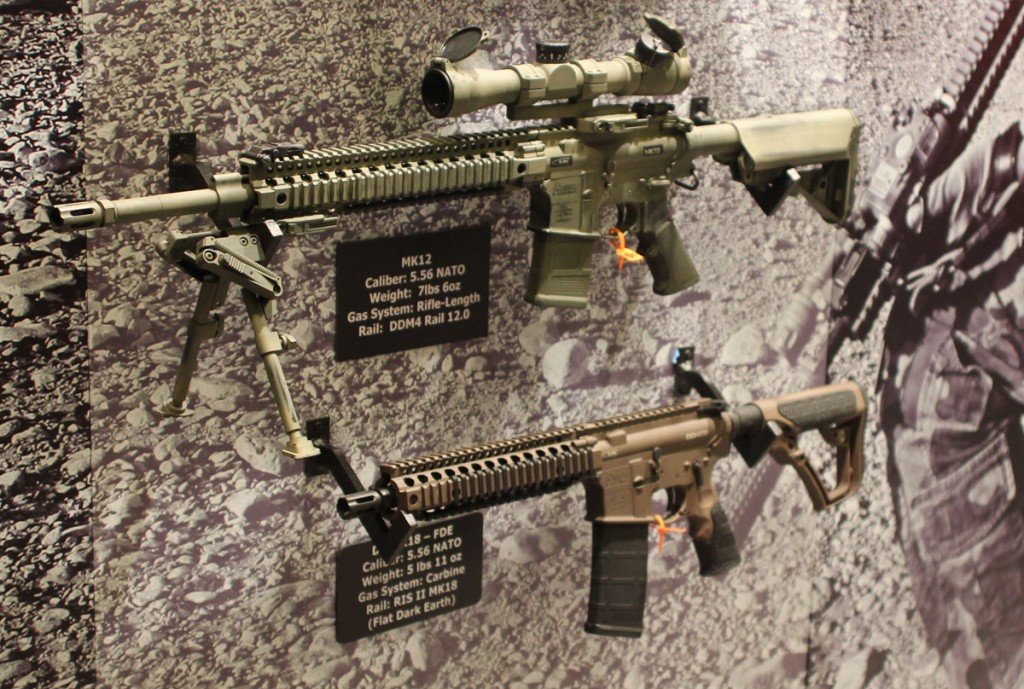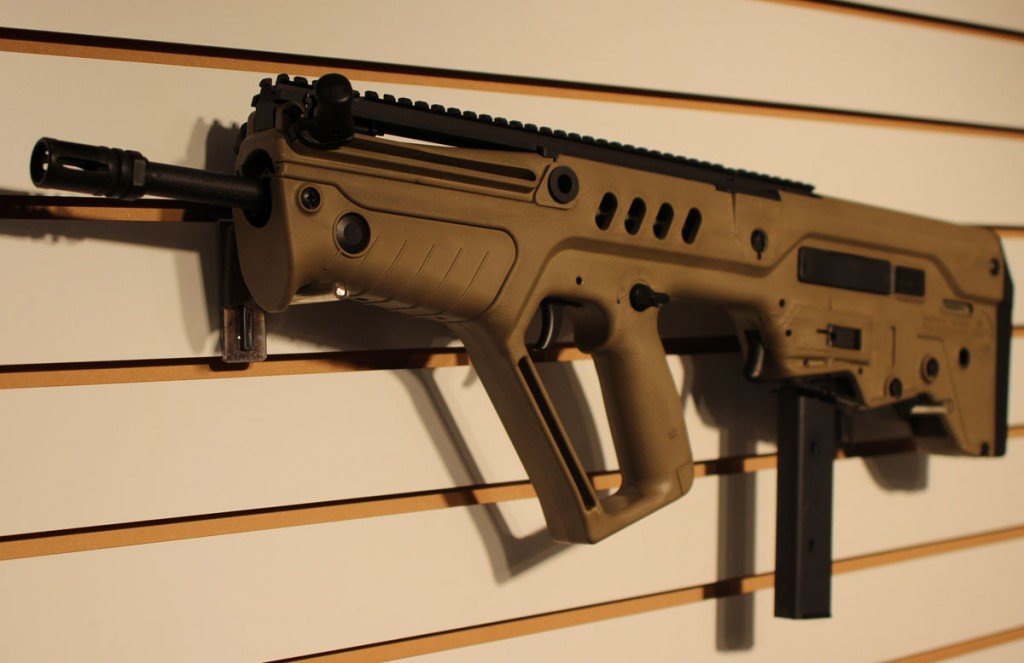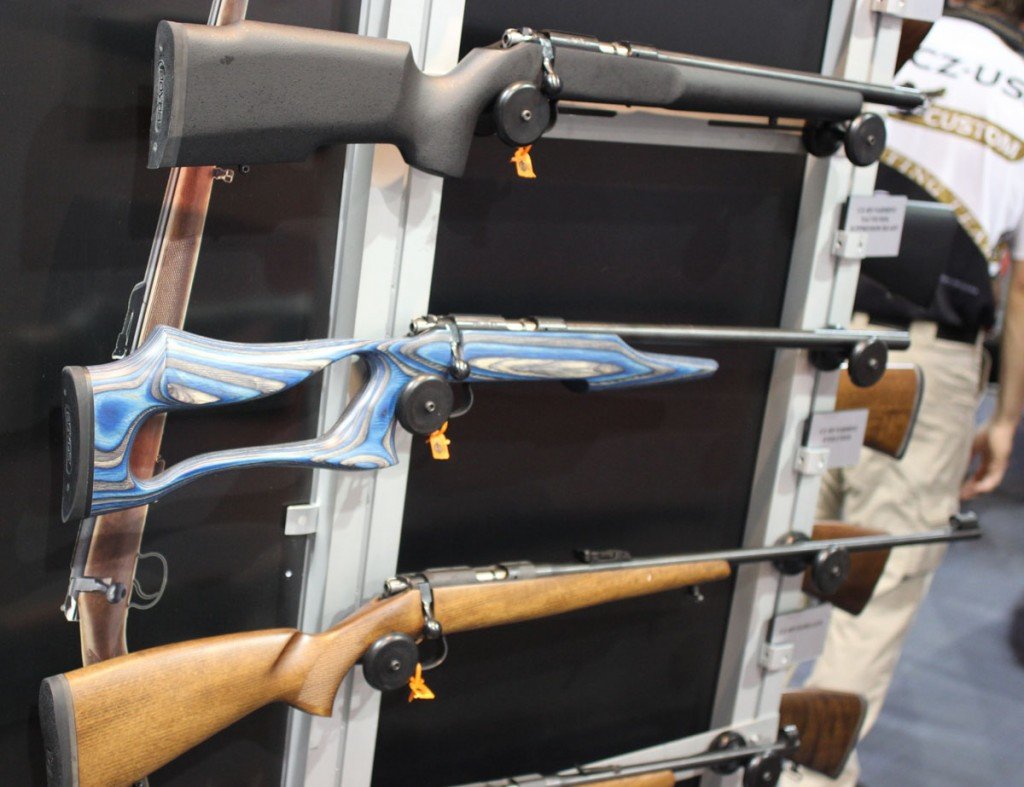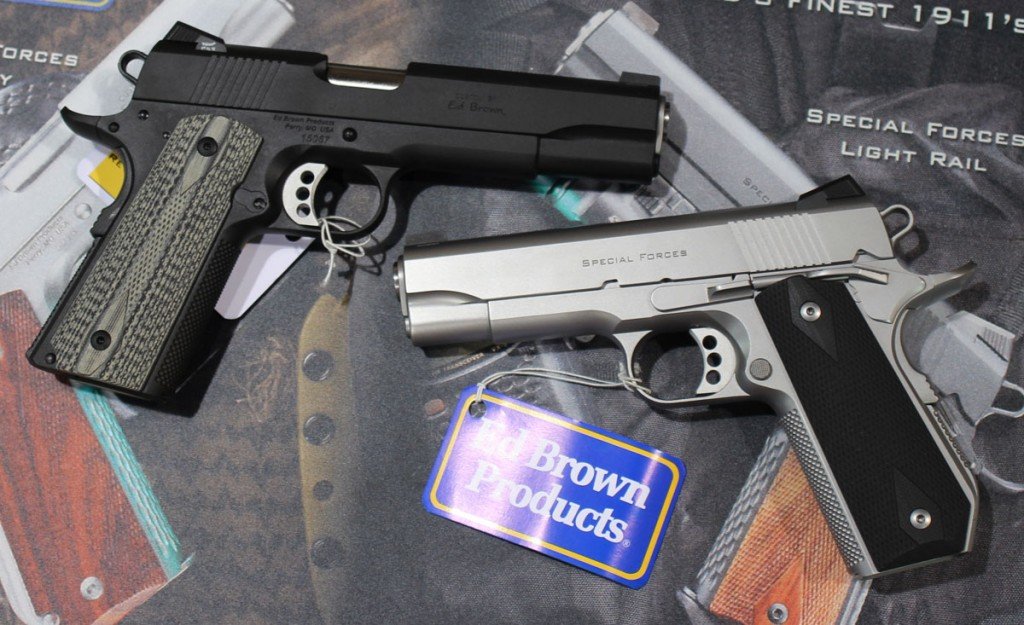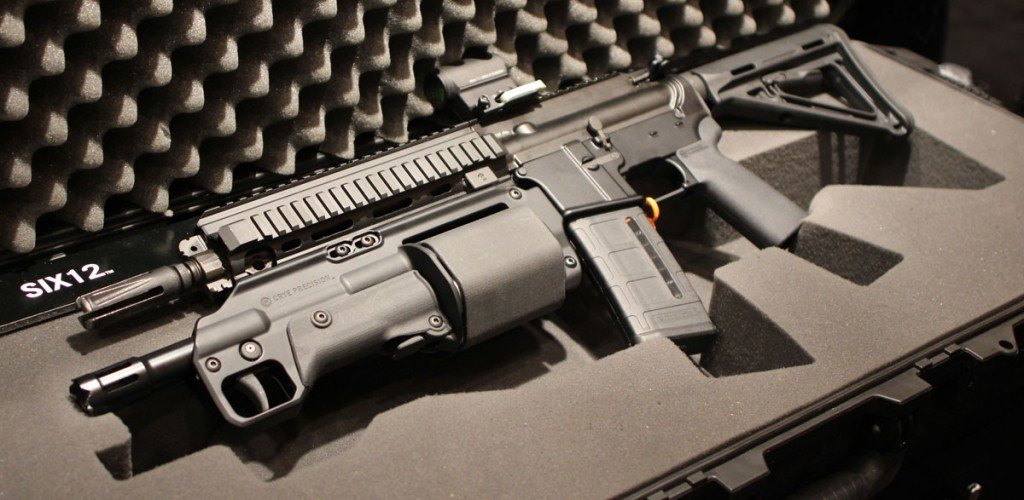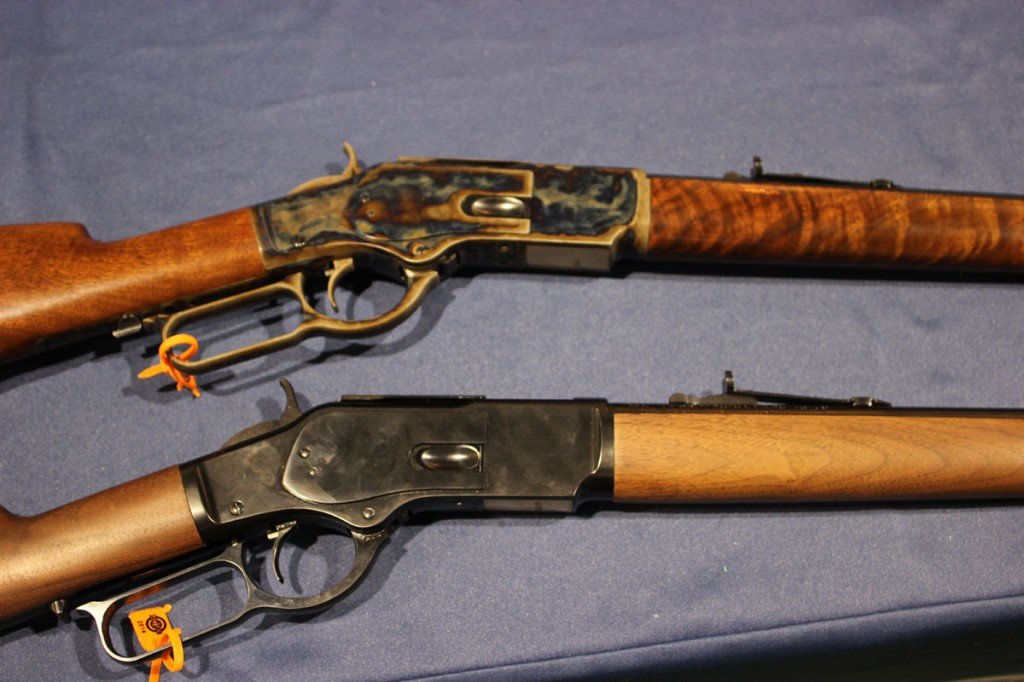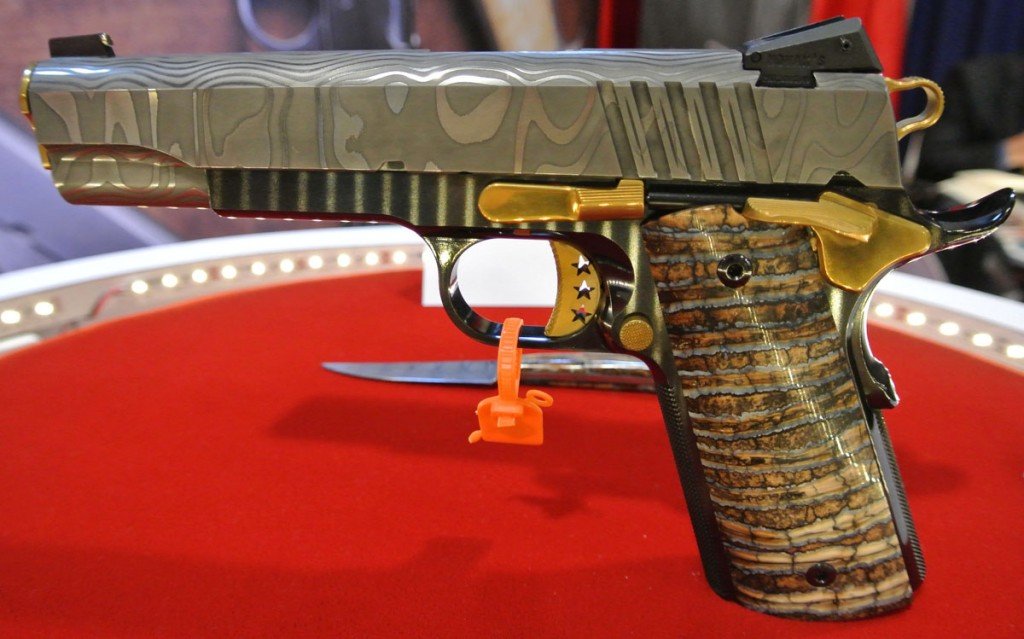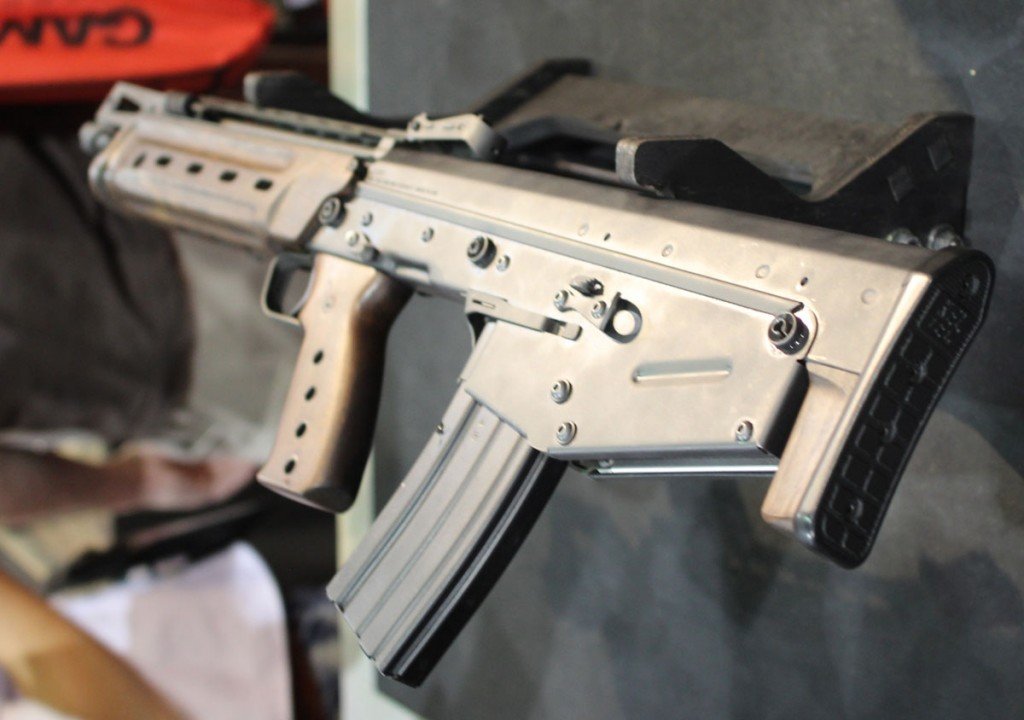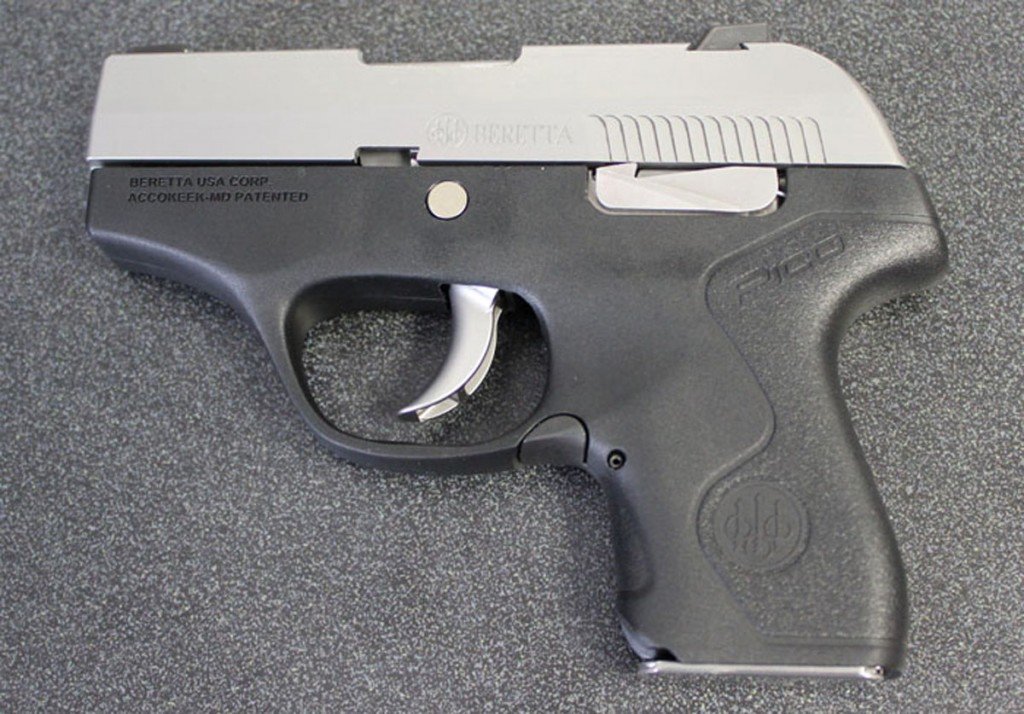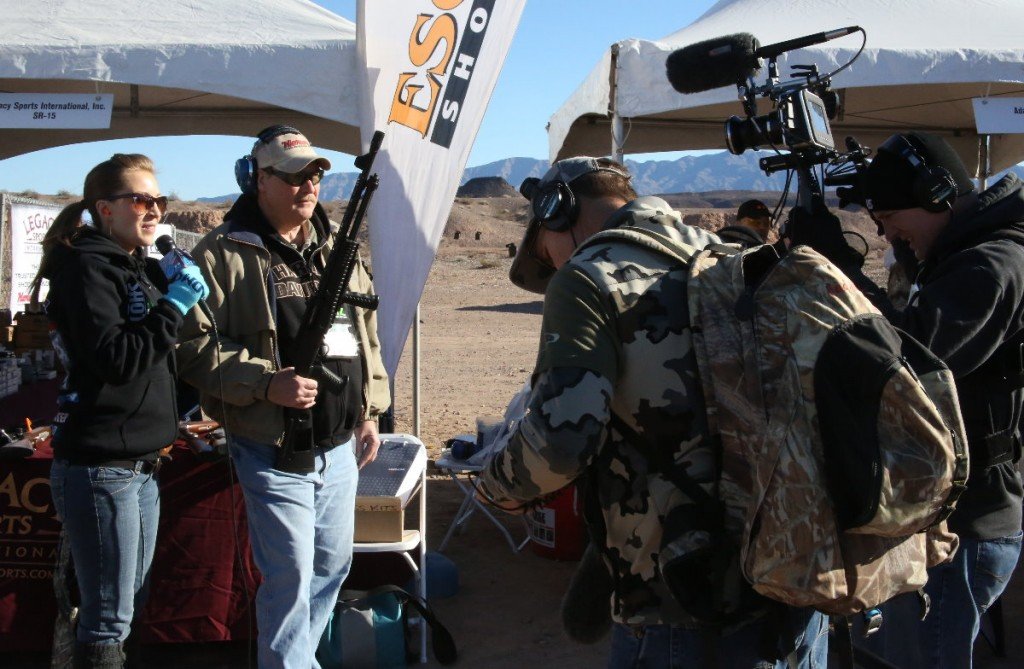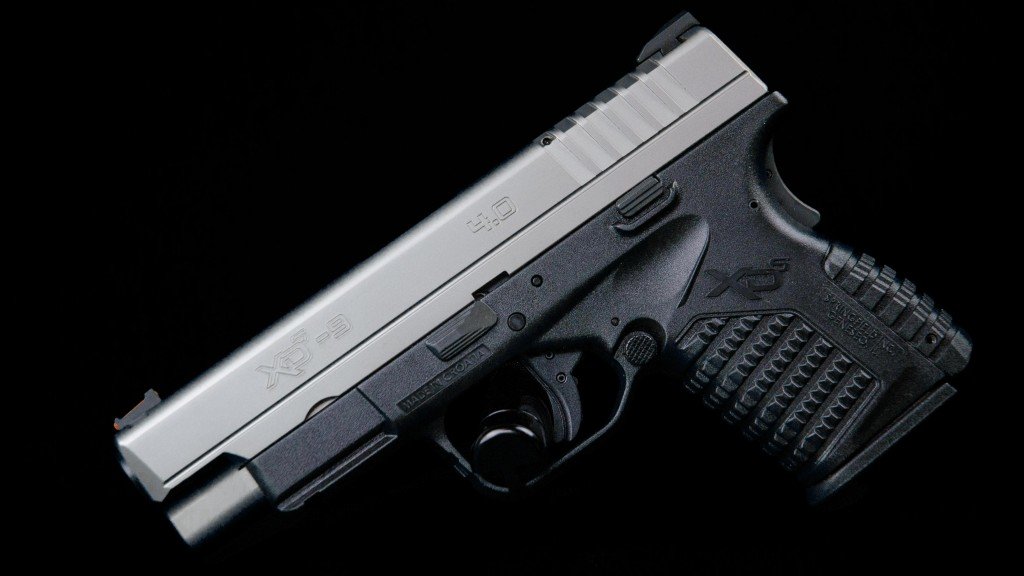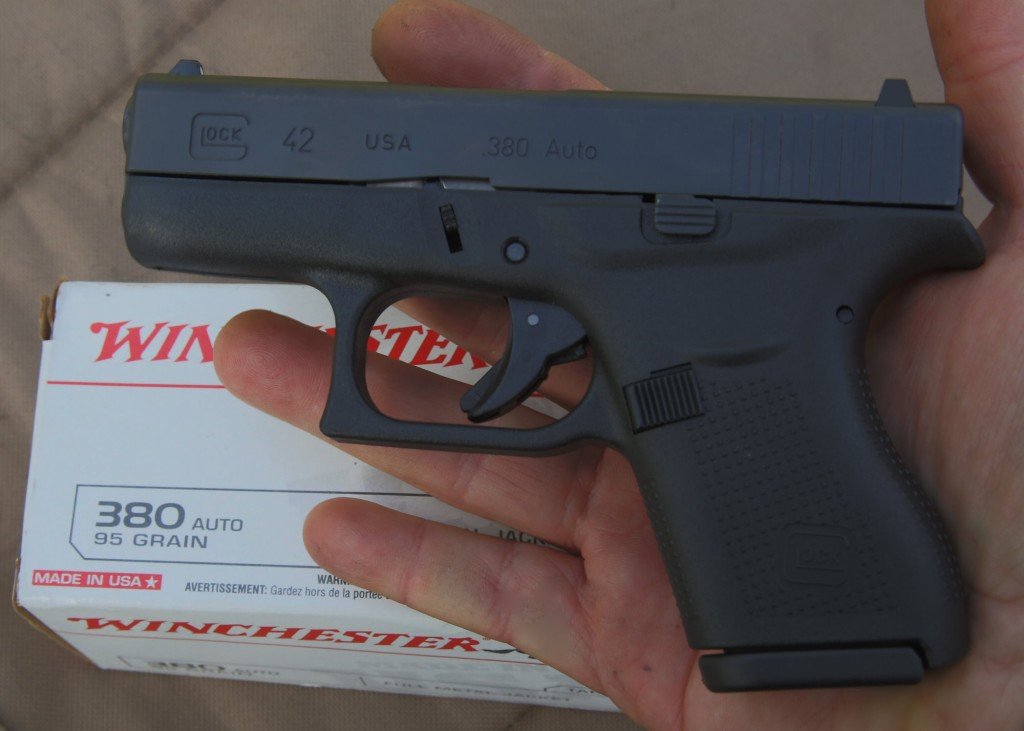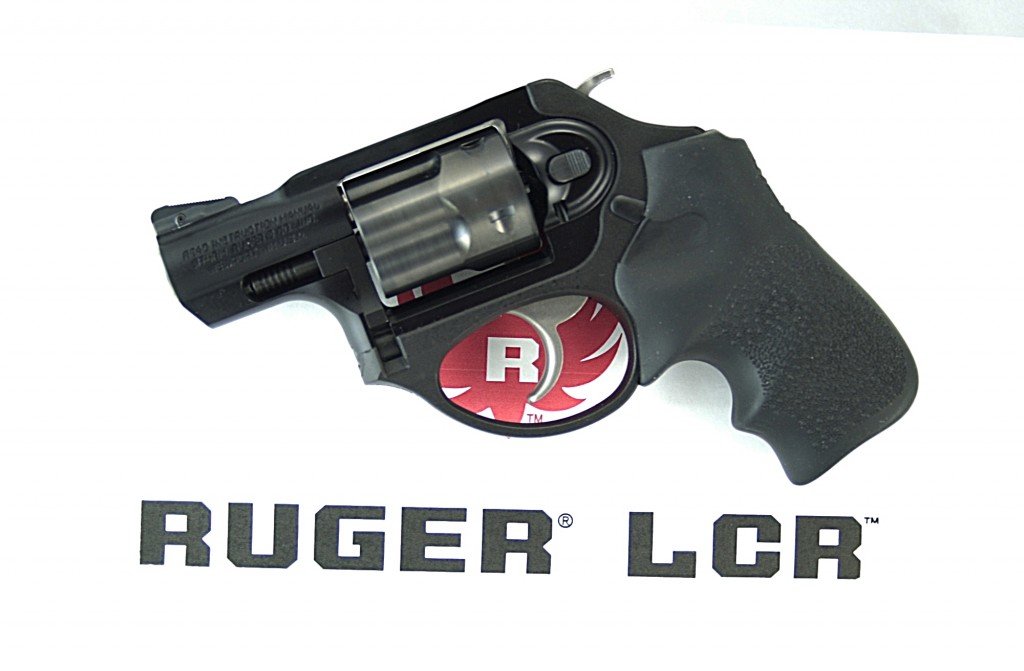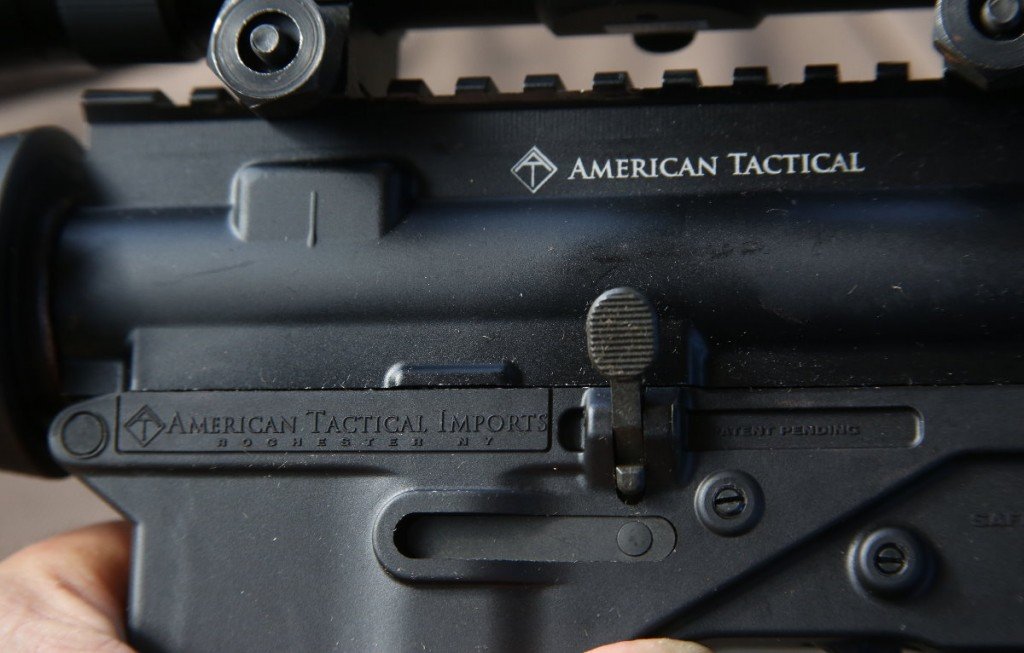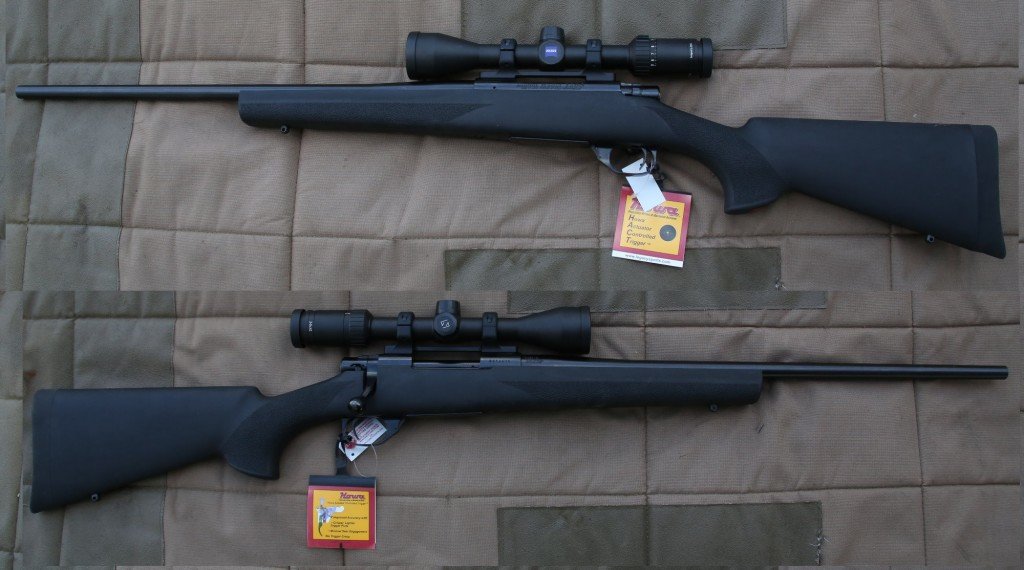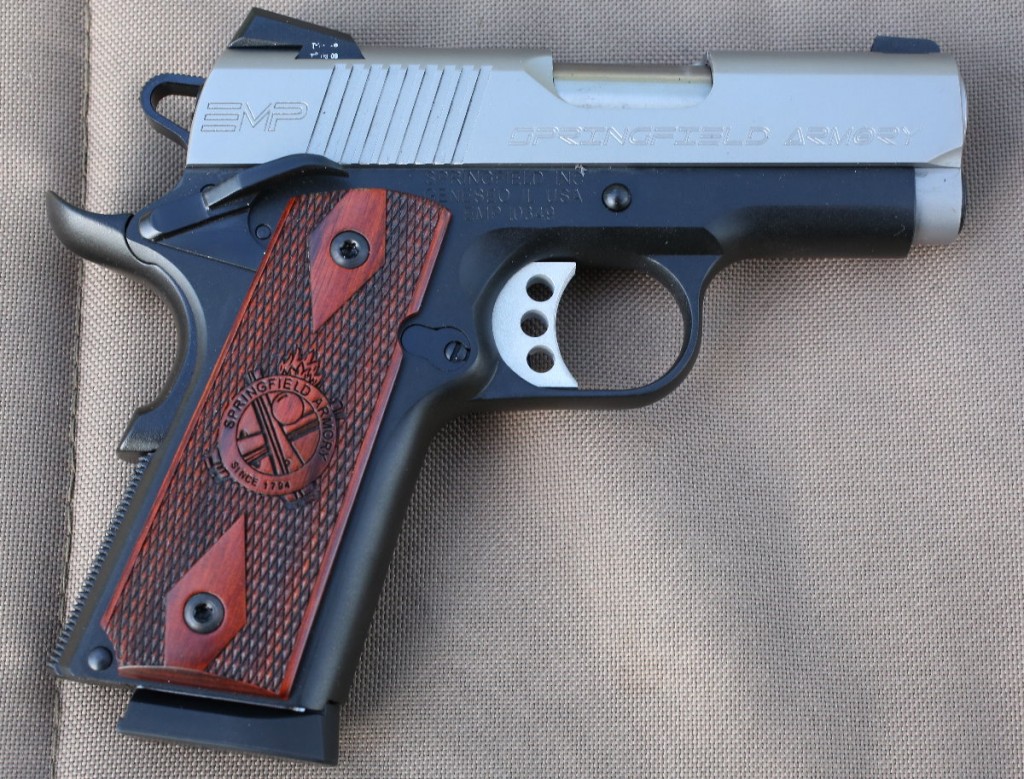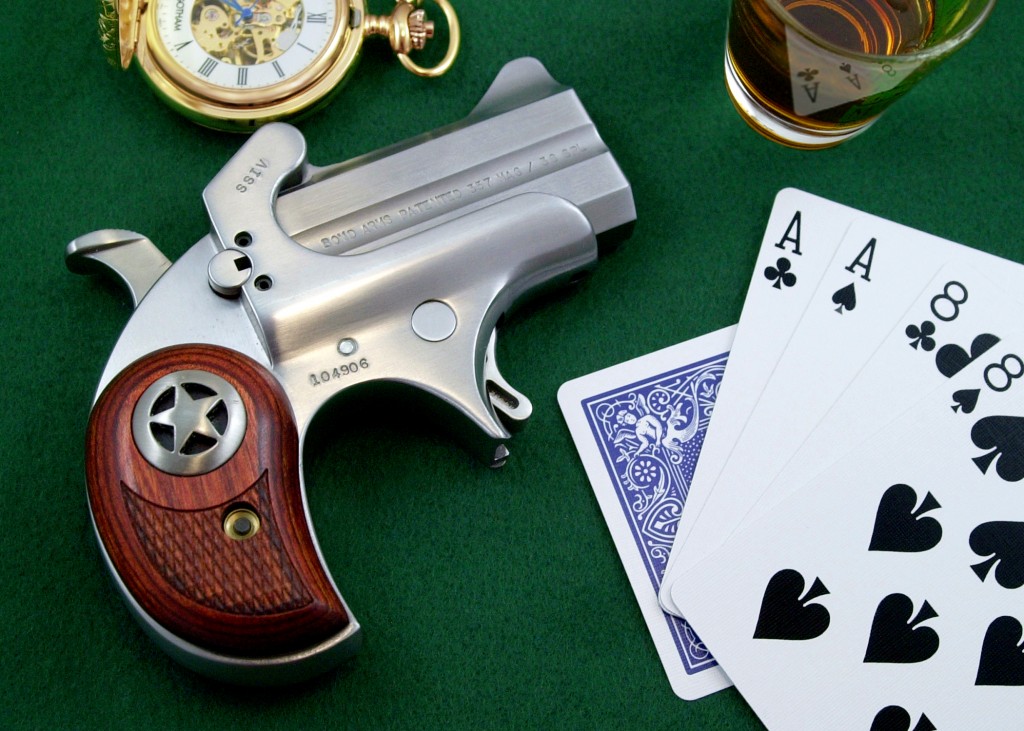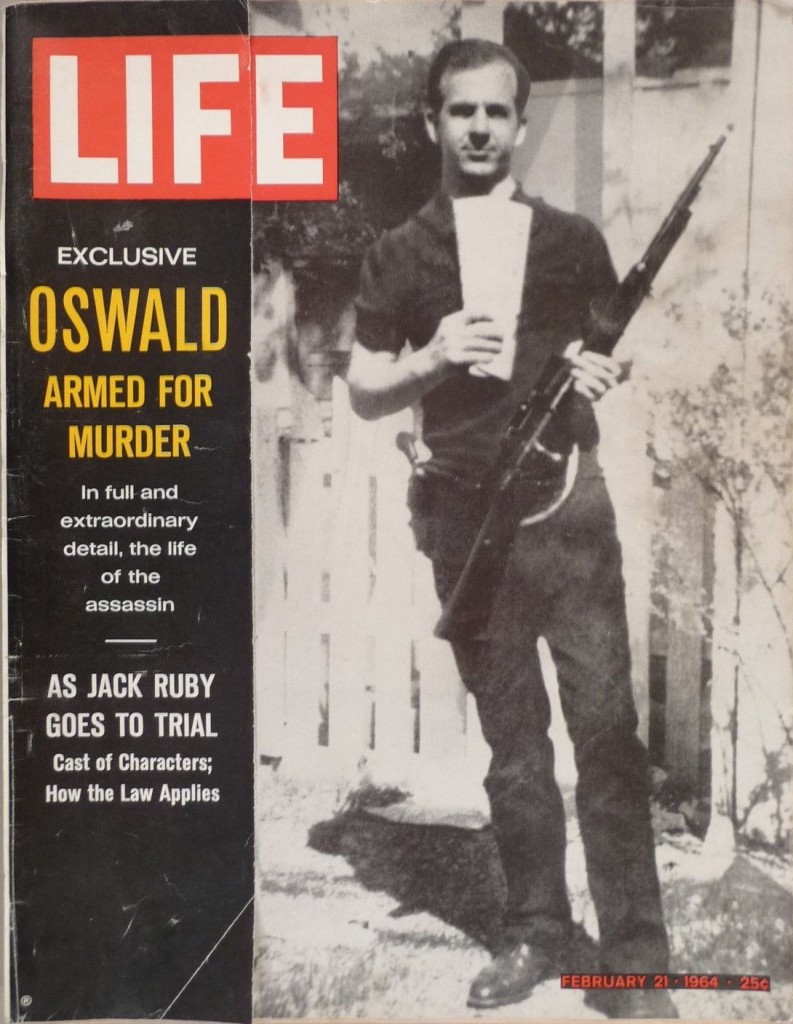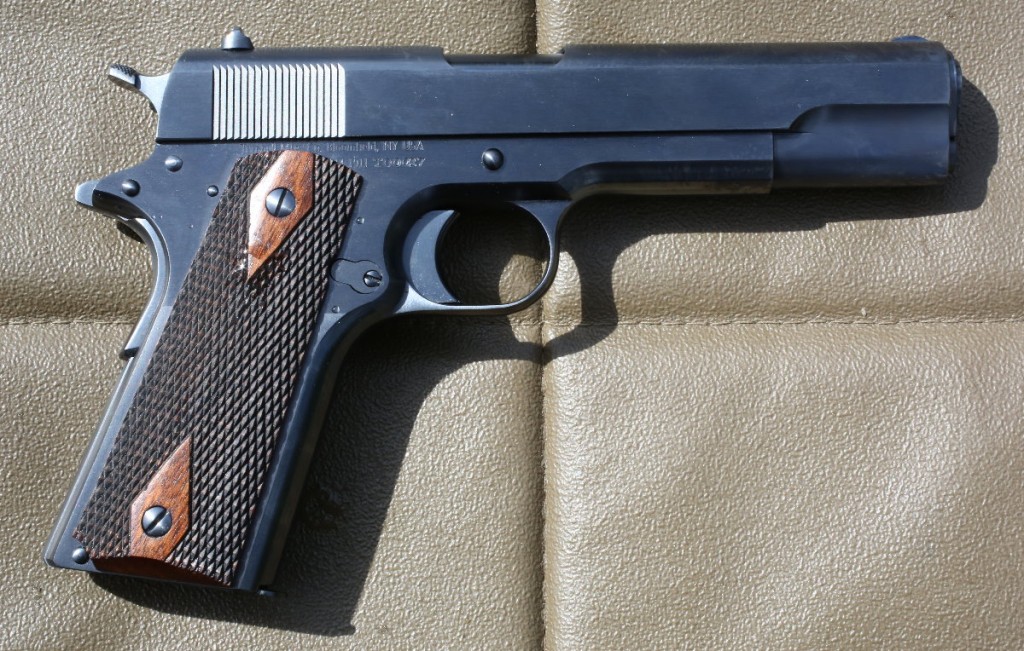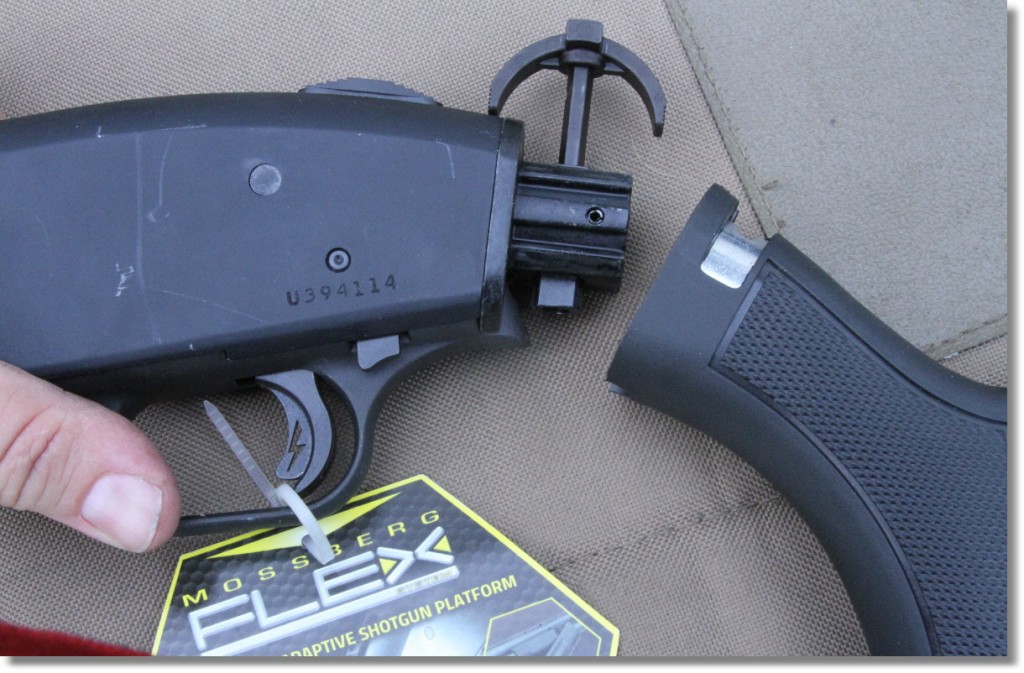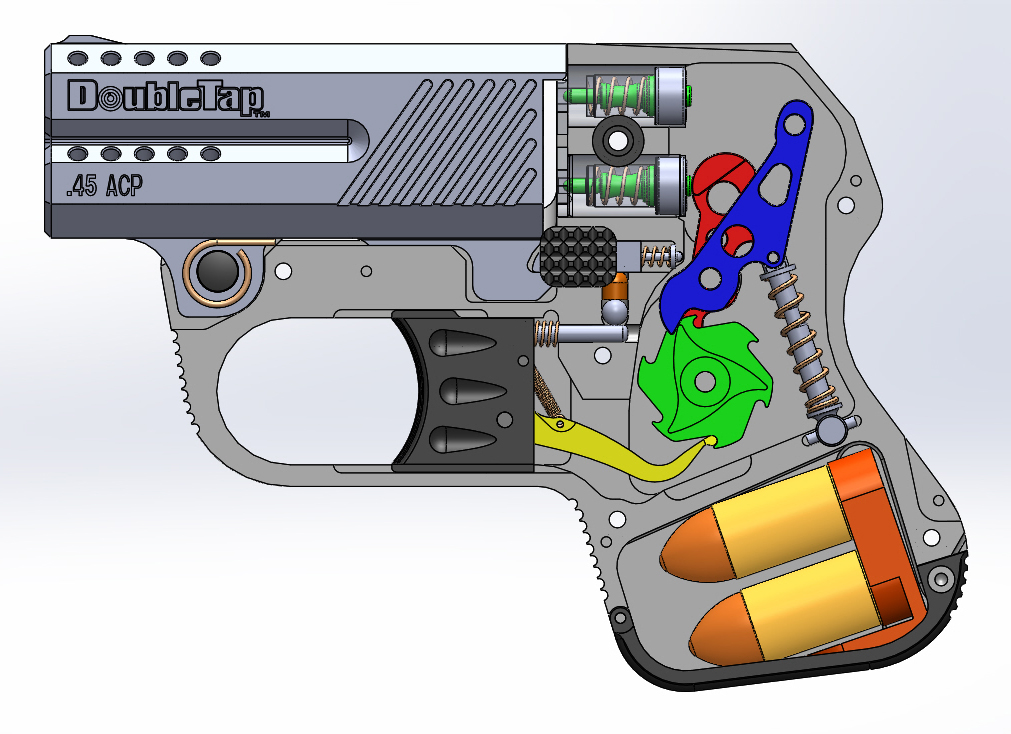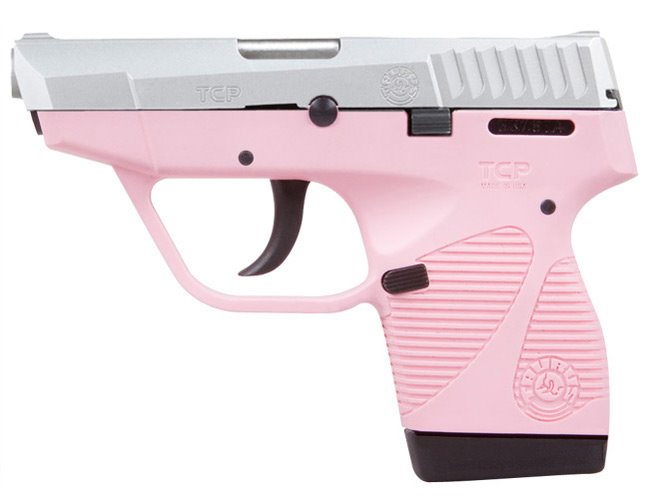Daniel Defense makes guns that are well known for their great shooting barrels. The new V9 series of M4 rifles in 5.56 feature three barrel profiles, allowing buyers to select the barrel that best meets their needs. There are a number of features which make the Daniel Defense barrels so good. The first is that they’re cold hammer forged. This process hydraulically hammers the barrel blanks around a mandrel that forms the chamber, lands and grooves. The forging process relieves the strain normally found in a barrel blank while delivering exceptional consistency in chamber size. Both contribute to improved accuracy. The barrels are then externally treated using a Melonite treatment, named for the Melonite salt used. This Nitrocarburizing process results in a smooth, slick surface that improves the surface hardness of the barrel while increasing resistance to corrosion and carbon adhesion. The three barrel profiles available in the V9 series include the16” government profile barrel, 16” lightweight profile and the 18” strength-to-weight (S2W) barrel.
Gun Reviews
Show First
Daniel Defense V9 Series M4: High Quality Makes Great Shooting Barrels—SHOT Show 2014
Published: January 16, 2014 { 4 comments }IWI ‘s Tavor SAR 9mm Conversion Kit Adds Versatility—SHOT Show 2014
Published: January 16, 2014 { 4 comments }The popular IWI US Tavor SAR won this year’s NRA Golden Bullseye Award presented for the best products in the shooting sports. IWI is building on that popularity and customer demand by introducing a complete kit to convert your Tavor from 5.56 to 9mm. If you’ve ever fired a 5.56 gun indoors without ear protection, such as in a home defense situation, you can appreciate just how loud it is. The same platform in 9mm would produce a lower level of sound with the added benefit of less recoil. The 9mm is also easier to quiet with a sound suppressor and less expensive for training. The kit comes complete with a 17” cold hammer-forged barrel, complete blowback recoil assembly including the bolt and carrier, 9 mm magazine magwell adapter, 9mm deflector, 32-round steel magazine and a barrel removal wrench. All you have to add is the ammo.
CZ-USA’s Western Series Rifles—Rugged, Dependable Tack Drivers for Your Favorite Hunts—SHOT Show 2014
Published: January 16, 2014 { 1 comment }CZ-USA’s Western Series 550 Sonoran bolt action rifle is highly accurate and extremely tough. These aren’t run-of-the mill production guns. CZ-USA takes Czech actions and custom builds the rifles to give you a rifle you can depend on when the chips are down. Each and every rifle is ferritic nitrocarbonized inside and out. That brings the surface hardness up to Rockwell 72, making the gun nearly impervious to wear and corrosion. It also improves lubricity, meaning you can use less lubricant for a cleaner-running action. As an added bonus, it doubles barrel life. The Sonorran wears the industry’s first all carbon fiber stock and sports such features as a fluted barrel, adjustable trigger and guaranteed accuracy of 1 minute of angle or better. It’s available in four models: .270 and 30-06 with a 24” barrel and .300 Win. Mag and 7mm Mag with a 26” barrel. MSRP is $3199.
Traditions Vortek Strikefire: Traditional Black Powder Meets Modern Technology—SHOT Show 2014
Published: January 16, 2014 { 0 comments }Traditions is well known in the black powder community as a manufacturer of superior firearms. The company produces old-fashioned-style flintlocks, but it also makes some of the most advanced black powder muzzle loaders available. The Strikefire rifles use a primer to ignite the main charge. The primers are ignited by an internal hammer. A simple slide of the lock button is all that’s needed to cock the hammer. Should you wish to de-cock it without firing, simply move the same lock switch to the rear, or break the action. You can see it more clearly in the video. A two-stage competition-style trigger with a break force of two pounds means that when you’re on target, you won’t upset your sight picture by firing the gun. The Strikefire system also improves lock time further improving accuracy. Safety wasn’t an afterthought, either. The Vortex Strikefire rifles incorporate not only a trigger block safety but are also equipped with an internal striker block safety. An alloy frame reduces weight, and a Ceracoat finish ensures corrosion resistance. The Ceracoat also makes cleaning a lot easier. To facilitate cleaning the barrel, simply remove the screw-in breech plug, giving you unobstructed access. The end result of the application of modern technology is a fast-loading, consistent-firing and accurate shooting rifle. With an MSRP in the mid $500s, it won’t break the bank either.
Ed Brown: Producing Beautiful Custom 1911s to Exacting Specifications—SHOT Show 2014
Published: January 16, 2014 { 7 comments }Ed Brown Products started life as a machine shop producing parts to consistently close tolerances. This experience greatly influenced the company’s manufacturing as it evolved into a custom 1911 manufacturer. Ed Brown Products is here at Shot Show 2014 showcasing a collection of beautiful guns. If you’re looking for a special 1911, you have to check out the unique pieces coming out of this shop. Because every part of the 1911s is produced in-house, you have a wide selection of components, finishes, and engraving from which to choose. There are four series of guns– the Classic series, Executive, Kobra, and Special Forces. Each has its own unique features and checkering patterns. There is also an in-house master engraver to provide whatever look you desire. Whether you’re looking for a full-size 1911 Commander in stainless steel with black Generation III coating or a Special Forces gun, Ed Brown can help you make it uniquely your own.
Connecticut Shotgun: European Elegance Made in the USA—SHOT Show 2014
Published: January 16, 2014 { 6 comments }Connecticut Shotgun is here at SHOT Show this year with a nice selection of even nicer shotguns. As the name of the company implies, these shotguns are made in New Britain, Connecticut—right here in the good old USA. Just about every gun maker in the country used to make a side-by-side shotgun, but that era is long gone. Connecticut claims to be the only American shotgun company making side-by-sides here now, and I can’t prove them wrong. Will the company be able to hold its own with the foreign competition that dominates the high-end market?
Crye Precision’s Six12: A Bullpup Revolving Shotgun?—SHOT Show 2014
Published: January 16, 2014 { 24 comments }Crye Precision, a company known for tactical gear popular with law enforcement and active duty military personnel, has made a gun unlike anything we have seen at the SHOT Show this year. Actually, it’s not like anything we’ve ever seen before. The Six12 is a bullpup revolving shotgun. The gun holds six rounds of 12 gauge (get it) in a revolving cylinder. The Six12s are designed to mount to AR platform rails, and make an AR look even much more aggressive. And it looks like it is going to be popular. We had to fight through an excited crowd to get you these pictures.
Navy Arms is Back! A Collaboration with Winchester and Turnbull—SHOT Show 2014
Published: January 16, 2014 { 20 comments }Navy Arms https://www.navyarms.com/ Navy Arms is back, although it didn’t really go away; it has just been a long time since it has sold firearms. The company has entered into collaboration with Winchester and Turnbull to create a remarkably well-built and beautiful 1873 Winchester lever action. The guns are manufactured in Japan by Winchester and [...]
Citadel M1 Carbine in 9mm: Do We Finally Have a Release Date?—SHOT Show 2014
Published: January 16, 2014 { 36 comments }We’re fans of a good pistol caliber carbine. Every year we see more options for those who want a gun that offers increased accuracy and better ergonomics. Yet it is hard to beat some of the old-fashioned workhorses of the past. The M1 Carbine, with its rich pugilistic lineage, can be a serious tool for home protection, and a fun gun too. But .30 carbine isn’t easy to find these days, and it isn’t as cheap as it should be, either. 9mm, on the other hand, is back on the shelves just about everywhere. Why not chamber an M1 in 9mm? Citadel has done just that.
Cabot Guns Special 1911s: The 1911 Becomes an Artist’s Canvas—SHOT Show 2014
Published: January 16, 2014 { 7 comments }Cabot Guns https://cabotgun.com/ Cabot Guns makes 1911s with aerospace precision. Their pistols are tighter than tight. They guarantee that the slide to frame fit is 0.001 of an inch or less. Cabot has made what is a one-of-a-kind Damascus 1911. President and CEO Robert Bianchin said it might be the toughest task they have taken on [...]
Kel-Tec Has Something Very Special for Bullpup Fans—Two Unique Gun Designs—SHOT Show 2014
Published: January 15, 2014 { 104 comments }Kel-Tec introduced not one, but two new bullpup rifles—the RDB outfitted in tactical attire and the M43 with beautiful wood furniture for you traditionalists. Both guns are in 5.56, feature an adjustable gas piston operating system and are ambidextrous. One of the problems with trying to build an ambidextrous bullpup, of course, is that side-ejecting spent casings come out in your ear if you’re firing left-handed, and front-ejecting guns are complex. Kel-Tec solves this problem with an ingeniously simple downward ejection behind the mag well. The RDB sports a tactical picatinny rail and polymer stock, and it comes suppressor-ready. The M43 features folding iron sights and a wood handguard, pistol grip and stock embellishment. These are both accurate, soft-firing guns for close quarters or long-distance work. You get a full 17.4” barrel in a compact package with an overall length of just over 26”. Production guns are expected to hit the dealer pipeline sometime in the fourth quarter of this year. MSRP will be in the $1,900 – 2,000 range. Watch the video for a first look at these two innovative rifles.
Kahr Introduces Three New Handguns and a New Kahr/Spyderco Knife Series—SHOT Show 2014
Published: January 15, 2014 { 9 comments }Whether you are looking for modern polymer frame pistols or the enduring Model 1911, Kahr has you covered. When it comes to a self-defense carry gun, you have to find a balance between concealability and function. Kahr has done a remarkable job with their slim, lightweight CT45 and CT40. These two guns achieve excellent concealability through the use of a single stack magazine, narrow frame and clean, snag-free design. However, Kahr didn’t do it at the expense of shootability. Both guns feature 4” barrels, and a full length grip holding seven rounds of either .40 S&W or .45 acp. With the stopping power of these two calibers and the accuracy of a 4” barrel, eight rounds should be enough to win the fight. A polymer frame, stainless steel barrel & slide assembly and an MSRP of $449 makes for a winning combination.
The Latest in Pocket Carry: Beretta’s .380 Pico—Media Day at the Range—SHOT Show 2014
Published: January 14, 2014 { 42 comments }There’s a time and a place for small guns. The Beretta Pico is the latest in a long of defensive handguns from the venerable firearms family. The Pico’s lines are reminiscent of the Nano, only the Pico is small enough to drop in your pocket. And Beretta’s putting a fashionable twist on the diminutive .380: it will be available in a traditional two-tone or with a variety of colorful frames.
Need an Escort? Try out the Gladius 20 Gauge Home Defense Shotgun from Legacy—Media Day at the Range—SHOT Show 2014
Published: January 14, 2014 { 21 comments }Sometimes we know what we’re going to see at the SHOT Show. But there are always surprises. One of the best surprises at the range today was the Escort Gladius 20 Gauge Home Defense Shotgun. Escort Shotguns, a division of Legacy Sports International, does not have the following enjoyed by its domestic competition, but if the Gladius is any indication, these shotguns will be winning people over.
First Look: Springfield Armory XDS-9 4.0 More of a Good Thing – New Gun Review – 2014 SHOT Show
Published: January 13, 2014 { 67 comments }Springfield Armory is announcing a new variant of the XD-S for 2014. It is the logical next step in the evolution of the sensationally popular XD-S sub-compact format. No, it’s not a new caliber offering – it is a new barrel length! Springfield has stretched the 3.3” barrel just ever so much to an even 4 inches. Why is this significant? For starters – recoil. I obtained my copy of the XD-S in 2012 in the initial offering of .45 ACP. If you have ever fired that gun, you know that it has some “personality” to it. Simple physics I’m afraid. Less size and weight of the handgun means more felt recoil for the shooter. The 2013 introduction of the 9mm version was welcomed by many because of the reduced pressures of that round, but it still has some snap. A 4” offering of this same gun adds weight where it is needed most – out at the muzzle. This helps reduce felt recoil. The XDS-9 4.0 also has a longer sight radius; adding ¾” to the length of the slide allows Springfield to push the front sight further forward by that same distance. This translates to a more accurate sight picture and better shots. Small errors in aiming are more noticeable, and therefore easier to correct with a longer sight radius.
Glock 42 Single-Stack .380 Micro-Pistol – New Gun Review – SHOT Show 2014 Preview
Published: January 7, 2014 { 157 comments }One of the biggest stories at SHOT Show for 2014 is a new single-stack .380ACP 6+1 from Glock called the Model 42. We were able to get a first look at the gun, and it is a lot of gun in a very small package. Most important, it is a Glock, and that carries a lot of weight with gun buyers in the market. Known for their ubiquitous “safe action” pistols, Glock is perhaps the biggest name in pistols in the gun world. The G42, at 13.6 ounces, 6 inches long tip to tail, 4 inches high from the top of the sight to the bottom of the magazine, and 13/16ths of an inch thick, is slightly bigger and heavier than the other micro .380s in the market, but small enough to be pocketed comfortably. The barrel is about 3 3/16ths or 3.2 inches long. The G42 handles much better than the tiniest of the pocket .380s, and we were able to shoot it into less than one-inch groups at 10 yards with Winchester range ammo. The only hiccup was that the G42 didn’t like Hornady Critical Defense, but that could be just because this is an early writer sample, and it is a brand new gun of course. The best carry gun is always going to be the gun you will actually carry and that you shoot well. A nice light, small and easy-shooting Glock .380 has been long awaited. We don’t have a projected MSRP for it yet, but as an everyday concealed-carry gun, this new Glock 42 should do very well.
Ruger’s External Hammer LCR, the LCRx – New Gun Review – SHOT Show 2014 Preview
Published: January 7, 2014 { 30 comments }The widely acclaimed Ruger LCR (Lightweight Compact Revolver) just got even better. As you know, the LCR is one of Ruger’s best-selling guns. They hit a home run when they introduced the first polymer revolver in January of 2009, and since then they’ve added several new versions to broaden the market for this revolutionary snub nose. The latest is the .38 spcl./.38spcl+P version with an external hammer—the LCRx. Don’t worry, the addition of the hammer hasn’t changed any of the great handling and shooting qualities of the double-action-only (DAO) LCR. It still has the same polymer lower housing that holds the fire control components, the same aluminum alloy upper and the same stainless steel barrel liner and cylinder. However, with this model you have the option of pulling the hammer back and firing in single-action (SA) mode.
American Tactical – Omni Hybrid Polymer AR-15 – New Gun Review – SHOT Show 2014 Preview
Published: January 6, 2014 { 50 comments }By Paul Helinski American Tactical www.AmericanTactical.us One of the niftiest AR-15 products to come out this year is a hybrid metal/polymer receiver from American Tactical Imports called the Omni Hybrid. Like all of the best polymer firearm technology, the Omni relies on a metal-to-metal fit at the major stress points. The ATI approach is a [...]
Ruger American Rifle .223 Standard & Compact – New Gun Review – SHOT Show 2014 Preview
Published: January 4, 2014 { 52 comments }Bolt action rifles may not be a subject that keeps you up all night chatting on Facebook, but for gun fanatics, the bolt action rifle is a core product of our sport and our passion. If someone had asked, “Who makes the best entry level bolt action rifle?” five years ago, I don’t know anyone who would have answered Ruger. That all changed in 2012, when Ruger introduced the Ruger American Rifle. Made 100% in the USA as its name suggests, the American was a rock star from our very first test on the gun now two years ago. Since then, you can’t walk into a stocking gun shop without seeing one on the shelf, in several calibers. The line has expanded to include a new Redfield scope package, as well as some new guns with stainless steel All Weather models. We were able to test the newly available .223 caliber guns in both the full sized and compact, and WOW. If you are looking for world-class accuracy, great handling and an affordable price on a bolt-action .223, look no further than the new Ruger American. MSRP is $449 on the American, and I challenge you to find a .223 bolt gun that outshoots it, at any price.
Howa Model 1500 Rifle – Zeiss Scope Package – New Gun Review – SHOT Show 2014 Preview
Published: January 3, 2014 { 8 comments }You can always tell which guns are surprisingly good by how many fans they have. Howa, a Japanese firearm maker that dates back to WWII Arisaka rifles, is one of those companies that if you say a bad word, hundreds of defender fanboys and girls will appear out of the woodwork to explain how you are mistaken. Maybe not the biggest kept secret in the gun world, Howas are great guns, and they are imported exclusively under their own brand through Legacy Sports International. Howa also makes the Weatherby Vangaurd, and the two rifles are for the most part interchangeable. This Howa 1500 Zeiss combo is a new gun for 2014, and we were able to test it before SHOT Show. Our test gun is a .308 Winchester, with a 3-9x power Zeiss sporting optic. The Zeiss is likewise made in Japan, not Germany or America like the flagship Zeiss products, but like most Japanese optics we have tested, it is clear as a bell with great edge clarity. The rifle itself is flawless, and a tack driver with factory Hornady ammo. Howa also has a nifty three-position safety, so you can open the bolt to unload your round with the trigger blocked. The Howa 1500 is a high-end rifle with a middle-of-the-road price. We don’t have a price for this gun yet, but most Howa rifle/scope packages go for $650-$800, and this one should fall somewhere in there as well.
Springfield Armory EMP Micro-1911 .40 S&W – Range Report
Published: December 8, 2013 { 46 comments }Sometimes the reviews here at GunsAmerica are driven by advertising, but not the way you have come to expect them to be in the print pubs. In the case of the Springfield Armory EMP Micro-Pistol, the first time an ad for it ran alongside one of our Digest emails, over 7,000 of you clicked on the ad, instead of one of the articles (ahem). This seemed to indicate that a lot of people were interested in the gun, so we asked Springfield for a test subject, in .40 S&W. The result was not only getting to shoot a genuinely nifty and useful firearm. It turns out that the gun is not just YA1911. (Yet Another 1911). Unlike all of the other 1911-style pistols in 9mm and .40S&W, the EMP was re-engineered to shoot these cartridges specifically. It is truly a “scaled down” 1911, and the components have been made to function reliably with both a smaller cartridge, and smaller barrel length, in the 1911 design. The grip angle is the same as the standard 1911 but the grip is thinner, and guts of the gun are smaller to work in a shorter space. We tested our EMP extensively, and it is both reliable and accurate. At a street price in the $1,200 range, this is not an inexpensive firearm, but with stock tritium night sights and custom shop grade parts, the Springfield EMP is a lot of gun if you want to carry a 1911 for personal defense. This gun has been available for many years in both 9mm and .40 S&W, but judging by how many of you clicked on the ad, there are still plenty of people who didn’t know about it.
Bond Arms Derringer – Range Report & Factory Tour
Published: November 22, 2013 { 35 comments }If you like small guns, you’ll find the Bond Arms derringer both capable and versatile. Its capabilities stem from the fact that it’s not as punishing to shoot as you might expect. In fact, controllability and shootability are very good with every caliber shot for this review. Its versatility stems from the wide selection of barrels, calibers and grips available. Whichever of the eight models you select initially (nine including their new Backup model), you can add barrels and grips to turn it into any of the other models. Mix and match grips and barrels to customize it to your needs. Bond Arms’ price list shows a total of 21 barrels capable of firing 17 different calibers. Their 3” barrel, their most versatile, is available in .22LR, .22Mag, .327 fed mag, 9mm, .357/.38spl., .40 S&W, 10mm, .44spl., .44/40, .45GAP, .45ACP, .45Colt, and .45/.410 (2 ½” chamber). However, as in most guns that serve multiple needs, it does some things better than others. I toured the factory in Granbury, Texas, USA, with owner and president Gordon Bond to see just how these guns are made. With the exception of the 400 series stainless steel forgings from which the guns are machined, all the work is done in-house. It may be a small company, but that doesn’t mean they don’t use state-of-the-art equipment to ensure their high quality standards. From numerically controlled milling machines operating down to less than ten thousandths of an inch accuracy, to robotic arms which provide precision and repeatability in surface preparation, to the artistry of individual experts who assemble, polish, and time the function of the finished product — quality is their principal driver.
Lee Harvey Oswald’s Carcano Rifle – Shooting It Today
Published: November 11, 2013 { 334 comments }This November 22nd will be 50 years since the assassination of President John F. Kennedy. The shooting itself has been the subject of movies, documentaries and countless books and articles; the legitimacy of any of them, including the official government explanation, called the Warren Report, is not within our purview to say. But we thought it would be cool to try to find one of the rifles that came from the same batch as Oswarld’s supposed murder weapon, and see what it looks like close up, and how it actually shoots. The 6.5mm Carcano we were able to find is serial-numbered C4880, and Oswald’s was C2766. That puts it only a couple thousand rifles away in the production line, and our test rifle has the original scope mount and scope found on Oswald’s as well, almost exactly like the rifle/scope combo he bought out of the February 1963 American Rifleman ad from Kleins for $19.99. We don’t know if the parts were originally on this gun and that they were part of that small batch of imports for Kleins, but it sure is cool, albeit a bit morbid, to shoot a nearly exact replica of the gun that changed the course of America, a course that still reverberates with the assassination today.
Al Capone 1911 – New in the Box from Doug Turnbull – New Gun Review
Published: November 10, 2013 { 21 comments }The finer things in life are sometimes just those things that technology can’t capture. If a gun is a classic, like the 1911, modern updates are great to carry an effective design forward. But there is a magic to the old guns that Cerakote and Picatinny rails can’t match for some. Doug Turnbull has been restoring classic 1911s, cowboy guns and classic shotguns for decades, with the correct bluing, case coloring and even the original roll engravings. If you missed our first article on Turnbull restorations, you really should read it. The problem with the old guns, though, is that there are only so many of them that are good candidates for restoration. And for 1911s, the further we get from the year 1911, the more any 100% original gun will be worth, regardless of condition. That is why Doug decided to bring the 1911 into his family of newly manufactured firearms, a list that includes the Winchester 1886, Colt Peacemaker style revolvers, and we recently reviewed the Turnbull steel version of the AR-15. If you have always wanted a 1911 that looked, felt and worked like a gun new in the box circa pre-1920, the Turnbull 1911 is the most accurate gun you could possibly own. We got to shoot Doug’s version of this modern classic, and sure enough, the safety is even stiff. These guns are available directly from Turnbull Restorations for $1,950.
The Browning High Power – The Original and Classic Pistol
Published: November 8, 2013 { 87 comments }Before there was a Sig P226 or a Beretta M92 there was a the Browning High Power. It was made by Fabrique Nationale in Belgium, and was designed by John Moses Browning like like the Colt 1911. But unlike the 1911, the High Power has always stayed under the Browning name and it is still manufactured today by Miroku in Japan. The major departure from the 1911 on the High Power is the feature that brings the 226 and M92 into the same family of guns. It is a double action/single action, method of firing. On the first shot, the trigger both pulls back the hammer and releases it, like a revolver. Once the first round is fired, the hammer stays back from being cocked by the recoil of the first shot, then the second shot fires single action. The tangent sight marks this as a military contract High Power. It is among the more desirable models from a collector standpoint.
The tangent sight marks this as a military contract High Power. It is among the more desirable models from a collector standpoint.
This double action/single action design evolved into an entire class of pistols, that eventually came with hammer decockers and safety decockers, but the original High Power had neither of those. It can be carried with the simple manual safety engaged, hammer back in single action (holstered of course), or without the safety engaged in double action mode. There have been several copies of the Browning FN high power over the years, but the original High Power is still made today for Browning by Miroku in Japan. Examples of the Belgian made High Powers are thought to be the original classic guns, and are sought by both collectors and shooters today.
Ruger SR-762 – Piston Driven 7.62NATO Battle Rifle – New Gun Review
Published: October 28, 2013 { 117 comments }Sturm Ruger & Co. knew back in 2009 that they needed to be in the semi-auto rifle market with more than just the Mini-14. They wanted an AR-15-type rifle, but soon discovered that the“Mil-Spec” AR-15 left a lot to be desired. A standard AR sends its hot gases back to the bolt, pushing on the bolt carrier and opening it for the next shot. This makes for a very hot and very dirty bolt group after only a few rounds, and this can and does hurt both short and long term reliability. So while most of the market was busy copying the standard AR-15 design with their own branded product, Ruger decided to take the less beaten path, and create their own design. That design was the SR-556, in 5.56 NATO, or .223 Remington. Instead of just gas, the 556 employed a rod to move the bolt, this rod rode above the barrel, and was controlled by an adjustable gas block. The design is very similar to the rifle that used to be called “the right arm of the free world,” the FN-FAL. This new Ruger rifle contained the gas/rod system of the FAL, yet had the weight advantage and ergonomics of the AR-15. Out of the gate the SR-556 was a hit for Ruger, and several variations of the SR556 are still extremely popular today.
The only thing is, the FAL is a 7.62×51 (.308 Winchester), not a 5.56. So since the introduction of the SR-556 the market has been screaming for a SR-762. About two weeks ago Ruger finally introduced one into the market, based on the exact design of the SR-556. The MSRP of the SR-762 is a hefty $2195, but as an “all you’ll ever need” rifle, we found it to be just that, and worthy of a lifetime purchase decision.
Springfield Armory XD-S Recall – Update & Review of Upgraded Guns
Published: October 20, 2013 { 305 comments }It was a huge surprise when this past Labor day weekend we started to hear that Springfield Armory had announced a recall on their XD-S series of concealed carry pistols If you are not familiar with the XD-S, it is a small, but not tiny, 45acp six shot, and this year Springfield brought out a 9mm eight shot, with the same external dimensions. The magic of the XD-S is ergonomics. The .45 shoots like a 9mm of any other brand, and the 9mm shoots like a .380 of any other brand. Springfield has never had a recall on any of their guns, so nobody knew what to expect. This article is something of an update, with the latest news, and we got to shoot a couple of the modified XD-S’s this weekend. An overview and review follow.
This past Friday, October 18th, Springfield started shipping back the upgraded guns from the folks who had sent them in starting that first week in September, when we first sent out our notification. The guns will be upgraded in the order that they were received. Denny Reese, the Co-CEO of Springfield explained what’s going on with the upgrade process in an interview on Friday.
Mossberg FLEX Modular 500/590 Shotguns – How Does It Work?
Published: October 7, 2013 { 13 comments }In a perfect world one gun will do everything you need. Well, the world isn’t perfect and who really only wants only one gun anyway? But a little FLEX’ability never hurts. When President Obama talked about people clinging to religion and guns, the gun he was probably talking about was the Mossberg 500 shotgun. If you are going to cling to a gun, the 500 isn’t the worst choice you could make, and it is probably the best. Last year Mossberg came out with a new addition to the 500 line, called FLEX, and it is indeed meant to bring a certain “FLEX’ability” to your Mossberg. At first glance you might think the various accessories in the pictures just screw on and off like normal hardware, but they do not. The FLEX system, in this first incarnation, is made up of three linkage systems. One is on the forend. Another is on the wrist of the gun, where the stock connects, and the third is on the butt of the stocks. With the FLEX system, one Mossberg 500 can be converted from a full length duck gun to a tricked out tactical to a bare bones pistol grip in about 30 seconds. Different recoil pads adapt for different sized shooters, and it takes no tools whatsoever to change the parts. Both the 500 and 590 guns are out in the market as FLEX guns, and they retail in the $450-$550 range depending on configuration.
DoubleTap Defense .45ACP Pocket Derringer – New Gun Review
Published: October 6, 2013 { 69 comments }The DoubleTap Tactical Pocket Pistol is an over/under break action derringer capable of delivering two rounds of 9 mm or .45ACP as fast as you can pull the trigger. It is sold as a simple and rugged option for deep concealment or backup. Make no mistake, this is not a range gun or plinker. It’s designed for one purpose and one purpose only – saving your life. We first saw the DoubleTap almost two years at SHOT Show 2012, but after some hiccups with manufacturing contracts and parts suppliers, the DoubleTap pistol is just now finding its way into the market. Our big question, and yours most likely, is the street practicality of the DoubleTap. The .45ACP is no kitten when it comes to recoil, and even though your followup shots are limited to one in the two shot pistol, an “ouch that hurts” after the first shot wouldn’t be the ideal in a concealed carry pistol. There are a lot of perfectly good pocket pistols on the market, and this gun has several red flags, as well as some outright user discomfort. At an MSRP starting at $499 for a two shot derringer, do we really need the DoubleTap?
Taurus Model 738 TCP – .380 Concealed Carry – Reviews from Women
Published: October 5, 2013 { 53 comments }There are a lot of guns in the market that gun nuts take for granted. They are basically good guns that have been around for a long time and sell a ton, yet they are really nothing special. But with all of the new shooters coming into the market, particularly women shooters, some old and extremely average guns are developing a dedicated following because they work, they fit great, and they are not expensive. Never one for big headlines, the Taurus TCP, also known as the Model 738, is a 10.2 ounce .380 6+1 that is carried by thousands of people every day, yet you rarely if ever see an interesting review or article on the gun. It is the lightest Taurus ever made, and since the arrival at Taurus of Mark Kresser and a new focus on consistency and quality control, the Taurus TCP deserves a fresh look. We asked our resident girl guru Carrie Lightfoot from The Well Armed Womanto take the gun for a spell, and have her whole crew shoot it and let us know what they think. Overall the gun did really well in the eyes of these very critical ladies, and they felt that the TCP was designed to be “just right” for the woman shooter. Here is Carrie’s overview:

